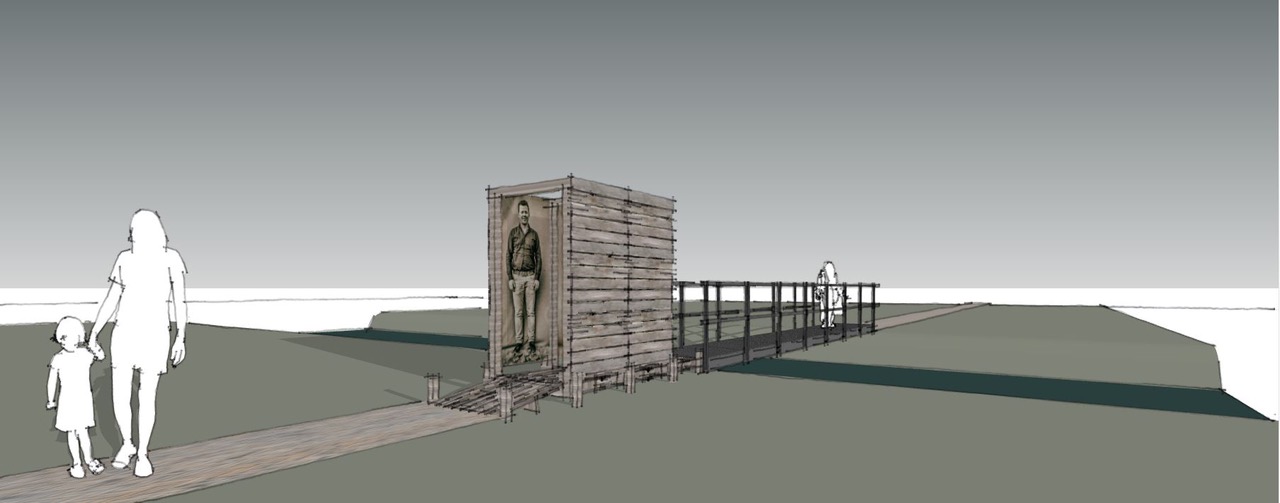Terp fan de Takomst can be translated as “Mound of the future”. Mounds (terpen) are an important feature of the Frisian landscape. Their long and rich history in the area appeals to the imagination, while they also raise questions when it comes to archeological details and serve as an inspiration for art, culture, and future developments in the area.
Various people have dreamed of creating the Terp fan de Takomst (‘Mound of the Future’) for some time: a new mound outside the dikes, for research and educational purposes, as a model for the original design, to experiment with new and old brackish crops, and as a place for reflection and contemplation.
The village of Blije has taken the initiative to actually build its own Terp fan de Takomst (‘Mound of the Future’). The village, which feels closely connected with the mudflats, states in a report in which it outlines its vision, “We want to face the Wadden Sea again as we live our everyday lives.” A central element of their plan is to build a new mound outside the dike, at the level of Blije village. Their objective is to create a new place of inspiration, to attract people to the village and the Wadden coast, to share ancient tales with one another, and to create new narratives.
A partnership of Dorpsbelang Blije, It Fryske Gea, the Terpencentrum (a scientific research body part of the Groningen Institute of Archaeology, which is affiliated to Groningen University), Province of Fryslan and Sense of Place, has established a project group with the objective of turning this dream into a reality.
Created by the Observatorium artists collective, the design for the Terp fan de Takomst project is conceived as an ‘artwork’ which appeals to the imagination of every stage of the development process, and serves as a destination for residents and visitors at each of these stages: a ‘Growing Mound’.
Mounds range in size from narrow (5 metres) and low (1 metre) to wide and high (up to 10 metres). Depending on their size, mounds can support anything from one house to a small hamlet to a church, and through the Groeiende Terp (‘Growing Mound’) the Observatorium artist collective wants to visualise and make people experience this process of stacking different layers on top of each other.
Designers are carefully outlining the future shape of the Mound using piles and a spiral pattern, starting at the bottom and ending at the top. The various stages are arranged horizontally, rather than vertically, thereby ensuring that each stage in the growth is and remains visible. One of the mounds will support a house and includes a core platform; a knoll will be added complete with a wall, and the drawing of the piles will ultimately result in a fully developed mound. The beginning is marked by a platform and the end by a wall (as a cross-section) of wood piles at the eventual height.
The clay will be supplied over the years, until the vision has been fully realised and the mound is exactly as it should be.
Realisation: July-October 2021

This new walking route will take you along a site known for a memorable episode in Friesland province’s recent history.
When a huge storm surge pushed seawater into the earth outside the dikes of the village of Marrum on the night of October 31, 2006, 150 horses ended up stranded on a ‘dobbe’ (a type of small island) behind the dike. After a joint effort involving wranglers, firefighters, veterinarians, animal welfare officers and the Dutch Army had failed to bring the animals to safety, six local women on horseback successfully herded all but one of the horses across the path. It was an extraordinary event, and the story of the Marrum Horse Rescue is etched in the collective memory of Dutch nature lovers and horse aficionados alike. A memorial was subsequently erected in 2011 to mark the bravery and ingenuity of these women.
At the initiative of Plaatselijke Dorpsbelang, a local interest group, a new walking route was designed that leads to the site of the rescue and which connects to the walking paths behind the dikes. The Noordoost aan het Wad project, which was launched in 2016 by the Agenda Netwerk Noordoost (ANNO) network of the communities of Dantumadiel, Dongeradeel, Ferwerderadiel and Kollumerland, is a development partner in this project.
On the 19th of July 2019 a very special art-piece by Marcel van Luit was installed at a very special location: right in the middle of the ‘dobbe’. This piece of art was made possible by a lot of partners and sponsors: De Versterking, STICHTING SIEBOLT FOUNDATION, Fries Paardenstamboek, Stichting Faderpaard en Gemeente Noardeast Fryslân, Wilcovak, Neenah Coldenhove, Chromaluxe en Epson.
‘Noord-Fryslân Bûtendyks’ consists of summer polders, ‘dobben’, salted grasslands, mud fields and salt marshes. The area is over 4180 hectare. You will find many birds here, including meadow birds like the redshank and yellow wagtail. They are joined in winter by the brent goose and barnacle goose, finding their food for the winter.
‘Dobbepaarden’ is a project in collaboration with Doarpsbelang Marrum-Westernijtsjerk and It Fryske Gea.
Realisation: 1.12.2018 – open until March 15 and after July 15
Location: Zeedijk 8, Marrum (from here you can find the sign on the dike which marks the start of the route)
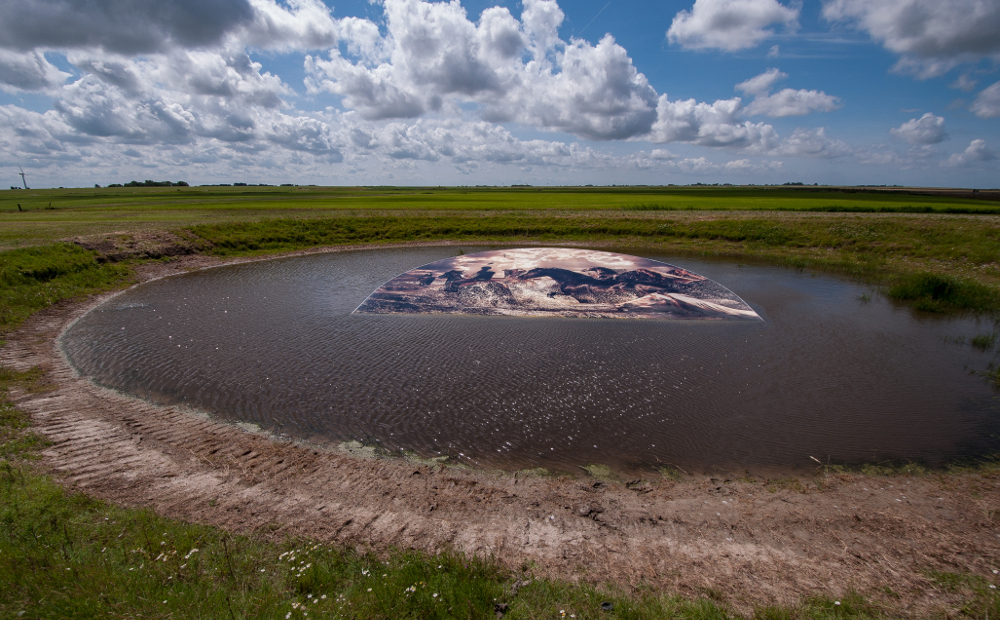
In 2018 the photo project ‘Bildtstars and Eigenheimers’ kicked off with ten giant portraits of local potato farmers along the Wadden Sea coast of Northeast Friesland. You will find the portraits – by photographer Linette Raven – on farm roofs, walls and barns in the middle of the landscape for at least five years. Installed on their own farms, the potato farmers and their families become visible. What story do they want to tell about the land they are working on? About their culture and their lives? Discover it on location – surrounded by all elements and at your own pace – guided by the ‘Bildtstars and Eigenheimers’ experience route: an expedition through a unique area. Since June 2020, zeven more photos were added to the route.
Portraits
The experience route ‘Bildtstars and Eigenheimers’ can be downloaded through the website of Visit Wadden‘. It’s also available at routes.nl. The route guides you along seventeen monumental photo installations that change your perspective on the landscape. From afar the portrayed potato farmers gaze over the fields. What moves these hard workers? Listen to the audio files through the website to learn more about their passion for the land, farm life and the potato. Information signs at all farms welcome you on their yard. The route starts in Hallum and ends in Anjum. By bike it takes about two hours, but you can also visit and admire the photo installations by car of course.
The beautiful stories about the farmers are written bij Ellen Schat.
Bildtstars & Eigenheimers promo from Sense of Place on Vimeo.
Bildtstars & Eigenheimers song by Jan de Vries
Potato eater meets potato grower
With ‘Bildtstars and Eigenheimers’ Sense of Place restores the relationship between potato eater and potato grower; all of a sudden local potato farmers are standing face to face with the audience and play the leading role in their own landscape. The ten portraits along the Wadden Sea coast of Northeast Friesland are only the beginning of the project.
In the next years to come many more large portraits will follow at surprising locations along the Wadden coast of Groningen. ‘The landscape is the people and the people are the landscape’, says photographer Linette Raven. You just have to get to know these people.
Are you coming along on an expedition? From now on you will not just eat fries or potatoes without hearing the wonderful stories!
Location: From Firdgum to Anjum
Bildtstars & Eigenheimers is made possible by:
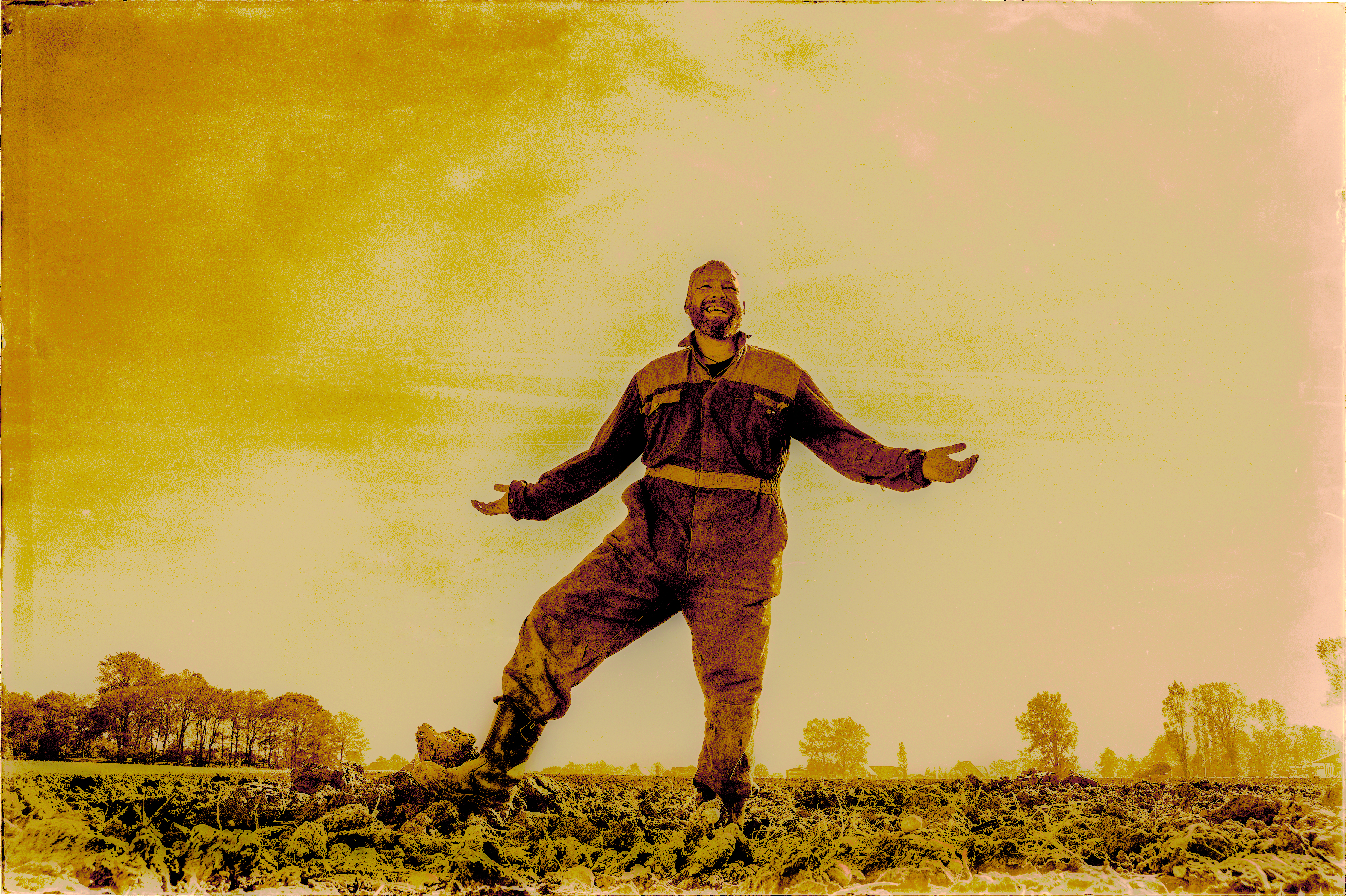
De Streken is a wooden structure created by the visual artist Marc van Vliet that changes with the tides.
Based on the sun and the tidal forces (and the moon), the artwork’s form change with the tide. This almost imperceptible variation occurs twice a day.
Visitors will be able to reach the wooden artwork on foot: during ebb across the mudflat, and during tide across the 150-metre-long pedestrian bridge. It is a meeting place that offers a different perspective on the vastness of the Wadden landscape by the hour and the day. The visitor’s gaze is directed outwards during the ebb tide, and inwards during the flood.
De Streken is realized in collaboration with Oerol and in 2021 installed until 7 July. The installation had to be dismantled earlier due to storm damage. Nature had decided. On the night of Tuesday, July 6, a south-westerly storm and spring tide came together, damaging the installation.
With today’s knowledge, a semi-permanent version is made for next year that is higher and stable enough to last three months in 2022.
About Marc van Vliet
Born in Den Bosch in 1961, this visual artist, theatre producer and designer is a resident of Overschild in Groningen province.
Self-taught in several disciplines and having started out as a designer, Van Vliet has risen to prominence over the past 17 years mainly through the location performances and installations of the Tuig theatre group with which we has been affiliated, which are characterised by a hybrid of images, motion and sound. In recent years, he has tended to focus on landscape installations.
Realisation: June 2022
Location: Oosterend, Terschelling, end of Perkweg

‘Wachten op hoog water’ (Waiting for high water) is a statue by Jan Ketelaar. The statue consists of two metal welded 5 meter high women. One big woman, the other one slender, looking out over the sea. You can position yourself in-between these women, and take their hand. The statue represents the search for balance and exchange.
The big woman was installed in December 2018, the year of Leeuwarden-Fryslân European Capital of Culture. On September 16th, 2019, she was accompanied by the slender woman. Watch the aftermovie by filmmaker Jonathan Doornenbal here:
Jan Ketelaar is an artist from Friesland. In 2002 he graduated from the Minerva Academy, cross-disciplinary sculpture. By the name of ‘Potzenmakerij Ketelaar’ he makes so called ‘potzen’: serious jokes. He exhibited in e.g. Portugal, Bremen and New York. Several times he travelled (by fork truck) through the Netherlands with his very tall statues. In 2014 his Royal fence was placed around the 1st Royal lime-tree in the Netherlands. The fence was a bench, shaped of lime-tree leafs.
Apart from being a sculptor, he also writes and publishes poems. In 2008 and 2012 he was in the final of the NK Poetry Slam. Last year his first bundle was published: “Of a man who thought, I don’t want to think anymore”. As a “potzenmaker’ he organizes literary and cultural meetings. He is also a planner. In 2014 the policy regarding the search for lapwing eggs in Smallingerland changed on his initiative.
Location ‘Wachten op hoog water’
Navigate to Grandyk 9, 9151 AE, Holwerd. You’ll see the statue from there and can reach it by foot.
Wachten op hoog water is made possible by:Douma Staal, RE-ON LAS lastechniek, LSC Ladder & Steiger Centrale, Mannen van Staal, Paviljoen De Walvis, Hotel De Gouden Klok, Eens, Judith Nieken and:
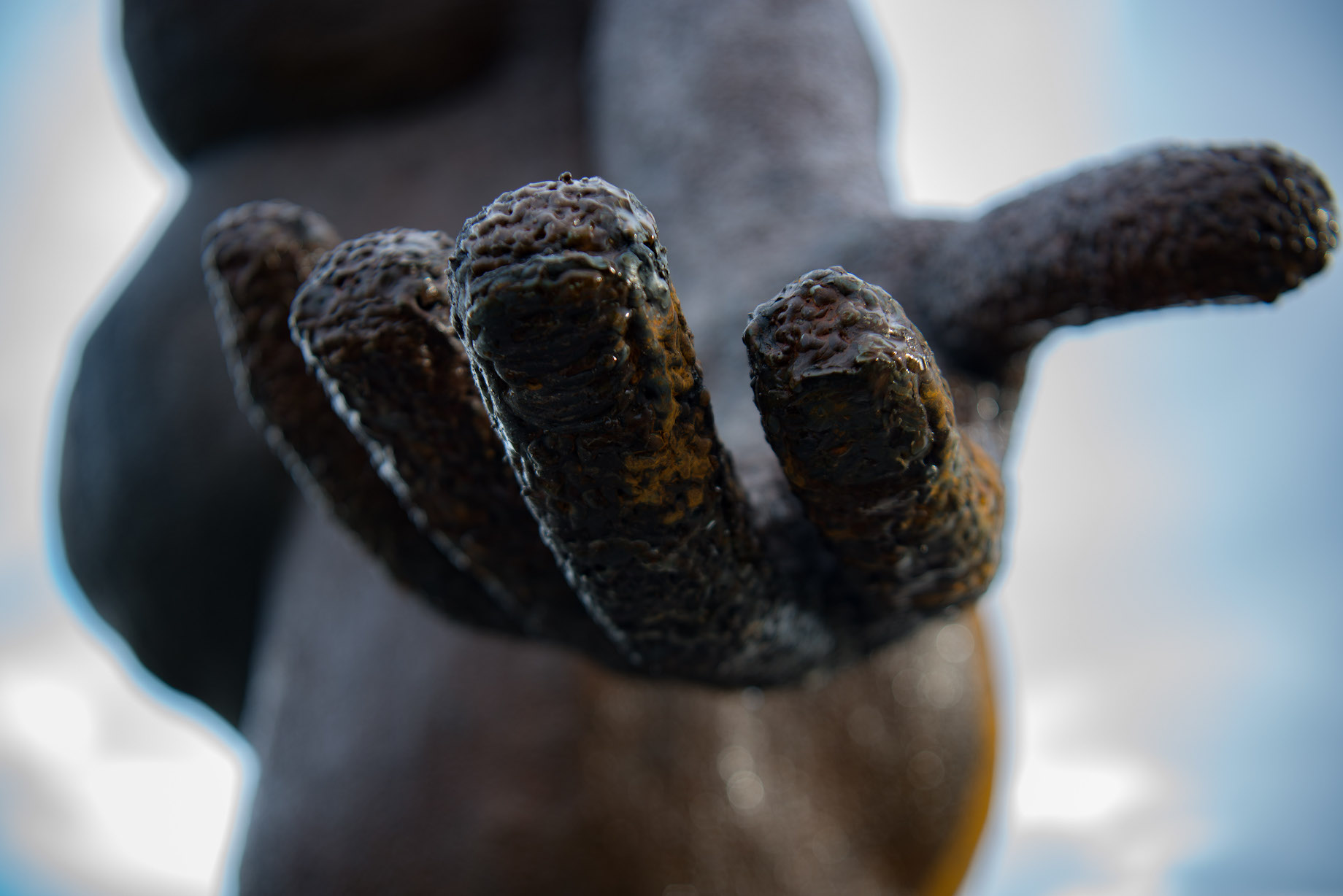
Moving Landscapes is a traveling exhibition, a Sense of Place initiative of artistic director and pioneer Joop Mulder. The six landscape artworks of Moving Landscapes manipulate, affect and navigate the perspective of the viewer. They make the invisible visible and invite audiences to make a new journey of discovery through the landscape and create a fresh look at the Wadden area.
The existing installation Camera Batavia by Arjen Boerstra is the anchor and inspiration of the project. Around it a group of artists, mostly no strangers to Oerol and Sense of Place, has been invited to create five new works. They have become: Level by Bouke Groen, Tumbling in Time by Sofie Doeland, Here We Are by Theun Mosk, Draaiing by Hart van Veen and Luw by Firma Kluit.
Moving Landscapes has been realized by Sense of Place and Oerol, in co- production with the Museum Kunst der Westküste on the German Wadden island of Föhr. After Oerol 2019 (14th July to 23th of July 2019), the exhibition travels to Föhr to celebrate the museums ten-year anniversary. It can be seen there from 29th of July to 29th of september 2019.
Read more about the current exhibition here.
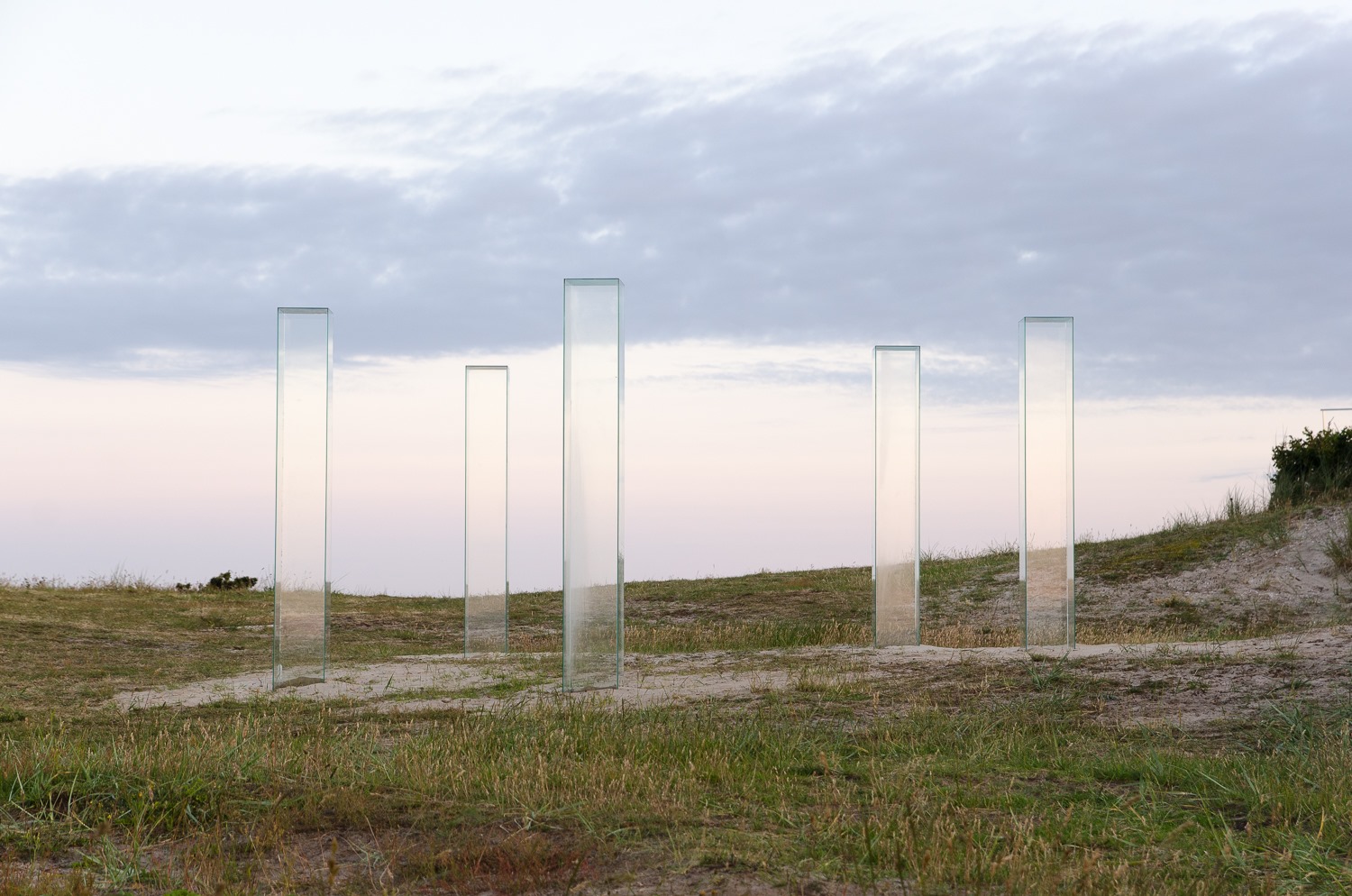
The De Nollen landward dune area in Den Helder is home to the ‘landscape of the imagination’. De Nollen is an existing art project featured in the Sense of Place programme. What once began as an artistic experiment in this old, neglected area has evolved into the life’s work of the artist R.W. van de Wint (1942-2006). He spent 25 years working on paintings, steel sculptures and large structures which are closely entwined with the dune landscape. The location and the image imbue the picture as a whole with meaning. Combining simplicity with complexity, his work is possessed of a real vitality that captures the viewer both visually and physically. In a world that’s changing at an increasingly faster pace, the artist sought to evoke a world of elementary images which have been the same for centuries: the light, the transition from light to dark, and the experience of colour.
This garden created by Van de Wint is reminiscent in style to the Henry Moore Studios and Gardens in Hertfordshire, England; Ian Hamilton Finlay’s Little Sparta garden at Dunsyre in the Pentland Hills near Edinburgh, Scotland; and the art collection at Museum Insel Hombroich near Neuss, Germany.
Reindert Wepko (Ruud) van de Wint (1942-2006) withdrew into the old landward dune area De Nollen after 1980, having stopped exhibiting in European museums at that point. De Nollen was to become his life’s work. Van de Wint is renowned for the paintings which grace the halls of the Dutch House of Representatives and ceiling frescos in the Groningen City Hall, as well as the working quarters of former Queen Beatrix of the Netherlands at Noordeinde Palace. In addition, he created around 35 sculptures, which are spread throughout the Netherlands. In 2002, an exhibition of his work was staged at the Kröller-Müller Museum in Otterlo: R.W. van de Wint. Clair-obscur. Seven Statues.
For more information: projectdenollen
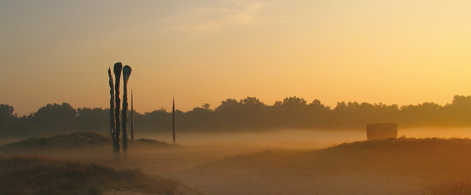
The ‘Men of Holwerd’ installation, created by artist Linette Raven, is a tribute by Sense of Place to the four initiators of the ‘Holwerd aan Zee’ (‘Holwerd by the Sea’) project. The installation depicts a sea lock with flowing water, featuring four life-size portraits of men at the interior of the lock. Visitors walk through a corridor of potato crates and stand eye to eye with these extraordinary men.
Through the ‘Holwerd aan Zee’ project, the initiators seek to break the negative spiral of population loss and economic decline in the village, proposing that there must be a breach in the dike in order to restore the link between the Wadden Sea and the hinterland. Residents, hydraulic engineers, businesses, artists and nature lovers are all keen to devote their talents and energy to the project, which represents a dynamic interaction between man and nature, water and land, and old and new. It presents both an economic opportunity for the village and the area as a whole, and an ecological opportunity for the Wadden.
A portrait photographer who likes to tell the story of ordinary, everyday people through her pictures, Ms Raven both initiates her own art projects and collaborates with others. One of her best-known works is Fan twa kanten (‘From Two Sides’), which features 182 portraits of residents of Terschelling island, presented in a life-size format in an outdoor location. She is also renowned for Pioniers van de Wieringermeer (‘Pioneers of the Wieringermeer’), featuring portraits of the first 40 residents of this polder. For further reference, see the Sense of Place project ‘Bildtstars en Eigenheimers’ (‘Bildtstars and Eigenheimers’)
Realisation date: June 2018
Locatie: Holwerd
